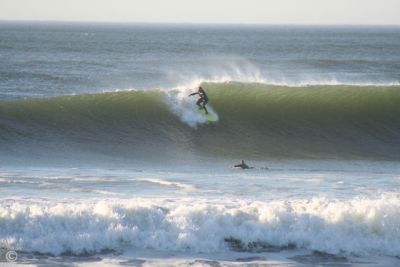
Publisher:
Bonnie King
CONTACT:
Newsroom@Salem-news.com
Advertising:
Adsales@Salem-news.com

~Truth~
~Justice~
~Peace~
TJP
Aug-16-2014 21:10

 TweetFollow @OregonNews
TweetFollow @OregonNews
3 in 10 Oregon Surfers Admit to Surfing During Health Advisories
Salem-News.com StaffSurfers ingest 10 times more ocean water than swimmers, about 170 milliliters a day, or half a can of soda, researchers said.
 Health warnings issued when beaches have high levels of bacteria do not keep many surfers out of the water, according to a new study by Oregon State University. Salem-News.com File Photo |
(NEWPORT, Ore. ) - Health warnings issued when beaches have high levels of bacteria do not keep many surfers out of the water, according to a new study by Oregon State University.
Nearly three in 10 surfers admit they knowingly surf during health advisories – nearly the same amount that chooses not to surf during periods of elevated bacteria. About 40 percent of surfers said they were unaware if they had ever surfed during an active health advisory.
The data can help public officials better warn surfers of potential health risks, said Anna Harding, co-author of the study and professor in OSU's College of Public Health and Human Sciences.
"Beach advisories for bacteria are not having their intended effect of dissuading surfers,” Harding said. “The lack of awareness about advisories – and willingness to take risks surfing in water that may be contaminated – suggests the need to educate surfers about behaviors that make them vulnerable to illness."
More than 500 surfers from the Pacific Northwest provided information for OSU's study and spanned a wide range of ages, incomes, surfing frequency and other demographics.
Of those surveyed by OSU, nearly 40 percent reported ear infections or discharge at some point during surfing; 30 percent, a sore throat or cough; 16 percent experienced diarrhea; 10 percent, fever; and 7 percent had vomited. Results were consistent across experience levels and were not lessened by showering after surfing.
Surfing during and after rain also led to higher rates of waterborne illnesses. Surfers are attracted to large waves that accompany a storm, but rain can send fecal bacteria from stormwater outfalls into the Pacific Ocean, as well as flush harmful microbes from animal feces present in streams and rivers onto beaches.
Surfers cannot avoid swallowing water – which can include harmful bacteria – during wipeouts, Harding said. They ingest 10 times more ocean water than swimmers, about 170 milliliters a day, or half a can of soda, she added.
Health advisories are posted online and on signs around the West Coast. But not every beach entrance has a warning sign, and many surfers do not notice them, said Dave Stone, co-author of the study and an environmental and molecular toxicology professor in OSU's College of Agricultural Sciences.
Beach sampling by states is intermittent, tends to lag behind current conditions and cannot cover all waters, Stone added.
"The best thing surfers can do is pay attention to the weather and where stormwater outfalls are located," said Stone, a toxicologist with OSU Extension. “They should also bookmark beach advisory websites with the latest information.”
"Surfers can go far in minimizing their exposure to microbes just by choosing when and where to surf," he added.
When an advisory is issued for a particular beach, water contact is discouraged and state websites advise beachgoers to avoid any activities during which they might swallow water, such as swimming, surfing, diving, and kayaking.
Using earplugs during surfing also leads to higher rates of ear infections, OSU researchers found. Generic earplugs tend to let water and bacteria inside the ear, Stone said, and then trap it inside the canal.
OSU's study was funded by Oregon Sea Grant and is available online in the Journal of Water and Health.
Source: Oregon State University
 |
Articles for August 15, 2014 | Articles for August 16, 2014 | Articles for August 17, 2014
Quick Links
DINING
Willamette UniversityGoudy Commons Cafe
Dine on the Queen
Willamette Queen Sternwheeler
MUST SEE SALEM
Oregon Capitol ToursCapitol History Gateway
Willamette River Ride
Willamette Queen Sternwheeler
Historic Home Tours:
Deepwood Museum
The Bush House
Gaiety Hollow Garden
AUCTIONS - APPRAISALS
Auction Masters & AppraisalsCONSTRUCTION SERVICES
Roofing and ContractingSheridan, Ore.
ONLINE SHOPPING
Special Occasion DressesAdvertise with Salem-News
Contact:AdSales@Salem-News.com

googlec507860f6901db00.html



Terms of Service | Privacy Policy
All comments and messages are approved by people and self promotional links or unacceptable comments are denied.
[Return to Top]
©2025 Salem-News.com. All opinions expressed in this article are those of the author and do not necessarily reflect those of Salem-News.com.